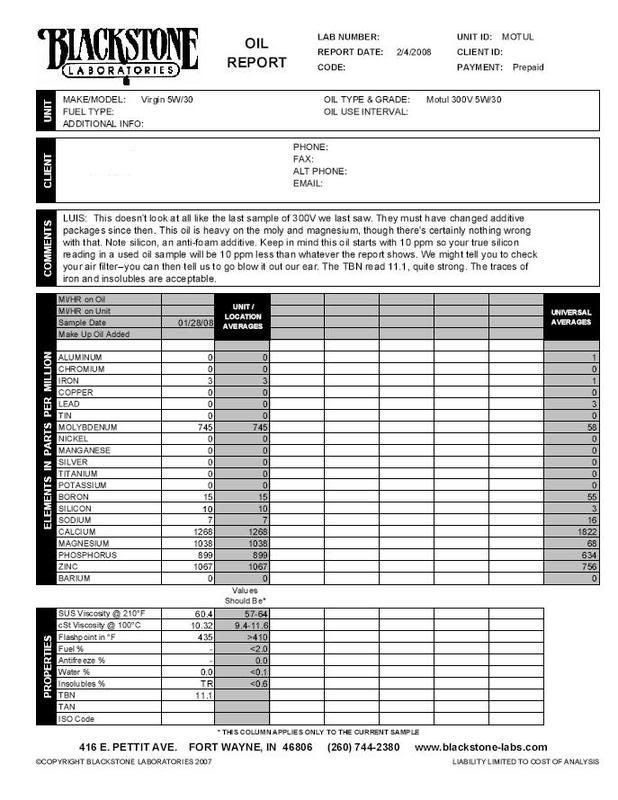When we measure the viscosity of oils at 100C (xW20, xW30, xW40 , etc) they all are generally within the published ranges for 20 , 30 , 40 weight oils.
Why then, does a 5W viscosity (at 40C per ASTM D-445) vary so wildly, depending on the operating viscosity.
For instance, I looked up some RLI oils and found the following (just used them because it was easy to look up, but everyone else does the same thing) viscosity's for each of the following at 40C (the first number):
5W20 - 45 cSt
5W30 - 59 cSt
5W40 - 90 cSt
Ironically, I also looked up their 10W30, and it is rated at 73 cSt - thinner at 40C than the 5W40!
Again, these numbers are typical for all brands and not unique to RLI.
I know how this is happening via the formularies, but the real question is why is a 5W40 allowed to be called a 5W when it's viscosity is higher at 40C than a 10W30?
And why does a 5W20 have a viscosity that is half as much as a 5W40 at 40C, but both are called 5W? This is VERY misleading to oil customers as they do think they are the same viscosity at room temp (or colder) and they are not!
Thoughts?
Why then, does a 5W viscosity (at 40C per ASTM D-445) vary so wildly, depending on the operating viscosity.
For instance, I looked up some RLI oils and found the following (just used them because it was easy to look up, but everyone else does the same thing) viscosity's for each of the following at 40C (the first number):
5W20 - 45 cSt
5W30 - 59 cSt
5W40 - 90 cSt
Ironically, I also looked up their 10W30, and it is rated at 73 cSt - thinner at 40C than the 5W40!
Again, these numbers are typical for all brands and not unique to RLI.
I know how this is happening via the formularies, but the real question is why is a 5W40 allowed to be called a 5W when it's viscosity is higher at 40C than a 10W30?
And why does a 5W20 have a viscosity that is half as much as a 5W40 at 40C, but both are called 5W? This is VERY misleading to oil customers as they do think they are the same viscosity at room temp (or colder) and they are not!
Thoughts?
Last edited:



